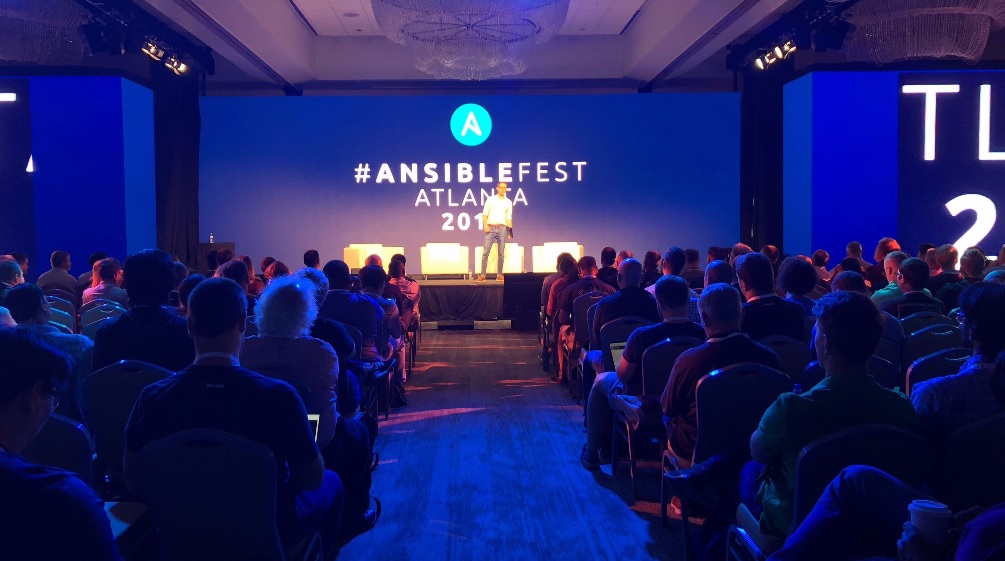 CLOUD
CLOUD
 CLOUD
CLOUD
 CLOUD
CLOUD
In the sport of car racing, the pole position is generally awarded to the fastest qualifying vehicle, allowing the recipient to race right to the front at the start and avoid having the maneuver through a crowded field. It’s an advantage, and some analysts see Red Hat Inc.’s Ansible automation technology in this coveted position.
“Automation is going to grow into a highly competitive, highly relevant and lucrative marketplace for companies, and Ansible is in the pole position to capture that for Red Hat,” said John Furrier, co-host of theCUBE, SiliconANGLE Media’s mobile livestreaming studio, during the AnsibleFest event in Atlanta, Georgia. “They actually have proof points. This community is demonstrating that the process can be more efficient, the technology works, and people are transforming.”
Furrier and theCUBE cohost Stu Miniman discussed the relatively small amount paid to acquire Ansible, the value it has delivered and the need for it to capitalize more fully on its success (see the full interview with transcript here). (* Disclosure below.)
When Red Hat acquired the open-source automation platform in 2015, the news garnered some attention in the technology press, but not much else. Ansible gained a little more notice two years later when it had become part of a third of Red Hat’s deals, but that was quickly overshadowed a year later when IBM Corp. opened its bank vault to buy the entire operation.
“It was only a $150-million acquisition, which is really small compared to a lot of the acquisitions that we see these days,” Miniman said. “Ansible didn’t get talked about all that much when IBM spent over $30 billion for Red Hat.”
As the analysts noted, Ansible has a loyal community, a growing customer base, champions in the enterprise, a useful product as an integration layer, and a robust partner ecosystem. So, why aren’t more people sitting up and taking notice?
“IBM has to get Ansible out there faster,” Furrier said. “Their value is also an Achilles heel, and the problem is that in the global landscape of the industry, they’re tiny. It’s almost too good and too small.”
Here’s the complete video analysis, part of SiliconANGLE’s and theCUBE’s coverage of the AnsibleFest event. (* Disclosure: TheCUBE is a paid media partner for AnsibleFest. Neither Red Hat Inc., the sponsor for theCUBE’s event coverage, nor other sponsors have editorial control over content on theCUBE or SiliconANGLE.)
Support our mission to keep content open and free by engaging with theCUBE community. Join theCUBE’s Alumni Trust Network, where technology leaders connect, share intelligence and create opportunities.
Founded by tech visionaries John Furrier and Dave Vellante, SiliconANGLE Media has built a dynamic ecosystem of industry-leading digital media brands that reach 15+ million elite tech professionals. Our new proprietary theCUBE AI Video Cloud is breaking ground in audience interaction, leveraging theCUBEai.com neural network to help technology companies make data-driven decisions and stay at the forefront of industry conversations.